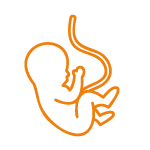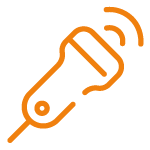[layerslider_vc id=”2″]

It all started with a constant cough, which initially looked like a persistent cold. But it got worse and worse. My doctor diagnosed a pleural effusion due to cervical cancer. I didn’t know how to deal with the diagnosis.
– Ramona K., cervical cancer –

Due to my breast cancer, water collected in my lungs, which had to be punctured regularly at the clinic. I suffered constantly from shortness of breath. I could do practically nothing without fearing that I would literally run out of air. Through my doctor, I was made aware of the possibility of drainage using an indwelling catheter.
– Marita K., breast cancer –

I was diagnosed with ovarian cancer a year ago. After some time, this also caused a build-up of water in my abdomen, ascites, as my doctor explained to me. Some days my stomach looked like I had swallowed a large melon and I could no longer hide it under my clothes. I was very ashamed and didn’t want to be around people anymore. When the implanted catheter made it possible for me to drain the abdominal fluid myself and not have to go to the clinic all the time, I was able to drain the fluid more often and nobody has noticed the tiny catheter under my clothes to this day.
– Tanja S., ovarian cancer –
Do you suffer from shortness of breath or do you have water in your stomach?
Every year, the number of cancer cases increases worldwide. Among women, gynecological cancers are the most common. For example:
- Breast cancer (breast carcinoma)
- Ovarian cancer (ovarian carcinoma) or
- Cervical cancer (cervical carcinoma)
In addition to the underlying disease, cancer often brings with it symptoms that make it difficult for patients to cope with their illness. These include recurring pleural effusions (water in the lungs) or ascites (abdominal fluid). Depending on the underlying disease and frequency of occurrence, different treatment approaches are chosen by the doctors responsible. These include , for example
- Repeated punctures
- Pleurodesis (adhesion of the pleural cavity)
- Talcum pleurodesis
- VATS pleurodesis
- TIPS (ascites) or
- Drainage systems from ewimed using indwelling catheters

What are the advantages of ewimed drainage systems?
- Independent, quick and safe drainage possible at home
- No further hospital stays to drain the effusion
- Simple and intuitive handling
- No repeated, painful punctures
- One-off, minimally invasive procedure to implant the catheter
- Highest safety standards thanks to the key-lock principle of the catheter with reservoir
- Increased mobility and independence for you as a patient
- Reducing the risk of infection
- High rate of spontaneous pleurodesis for pleural effusions without separate intervention
Our patient brochure for you!
In our brochure we inform you about the following topics:
- Cause of the disease
- Advantages of our drainage systems
- The implantation of an indwelling catheter
- Our supply concept
- Home drainage
We help you to alleviate your symptoms!
We will be happy to send you detailed information on this!
Do you have any questions?
Contact us now or find a selection of frequently asked questions here.




